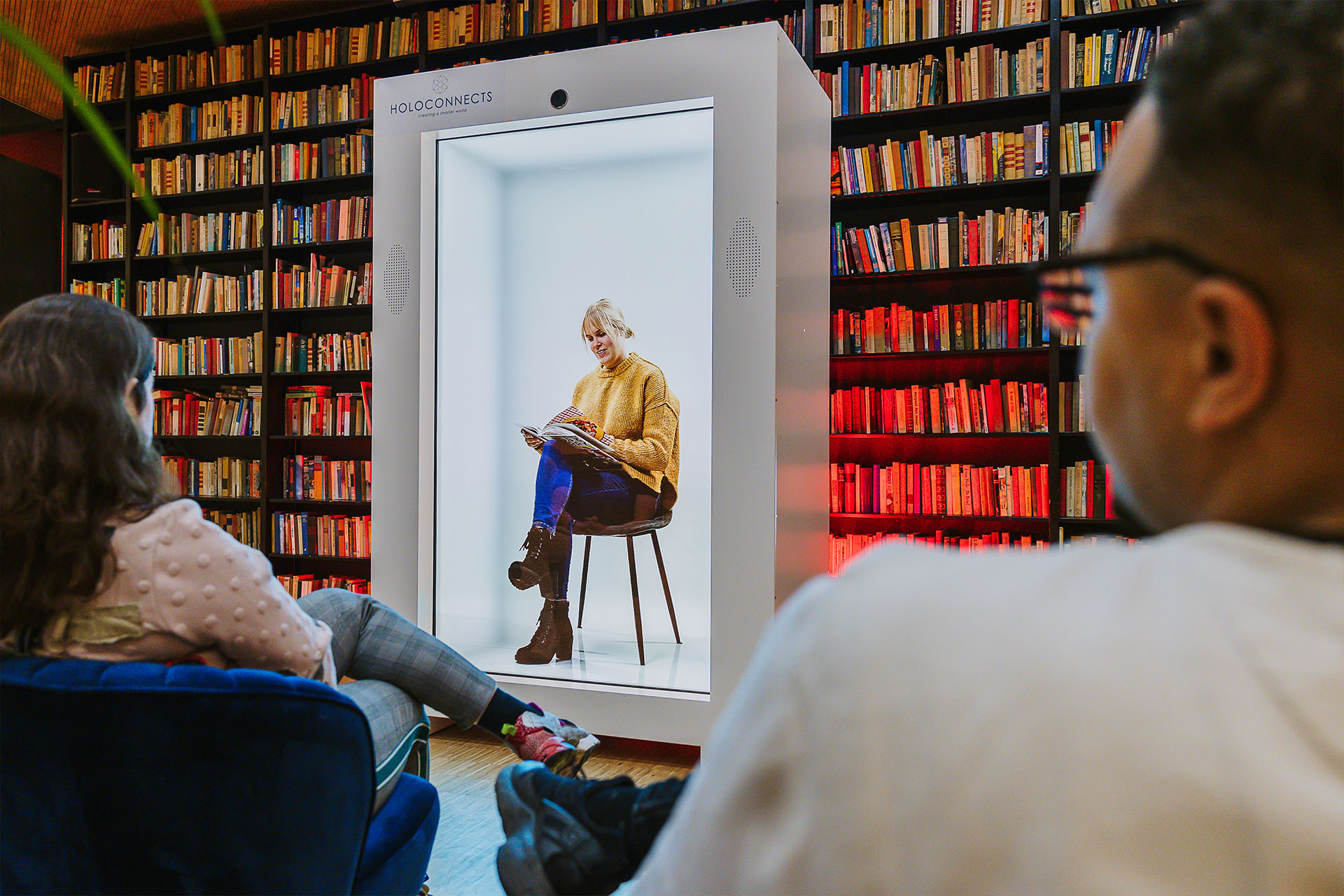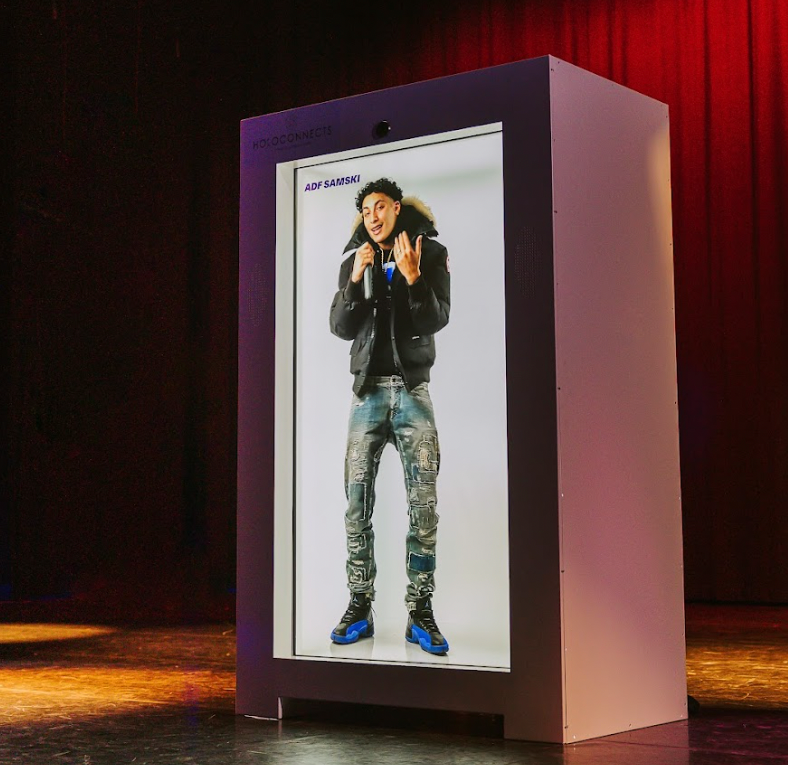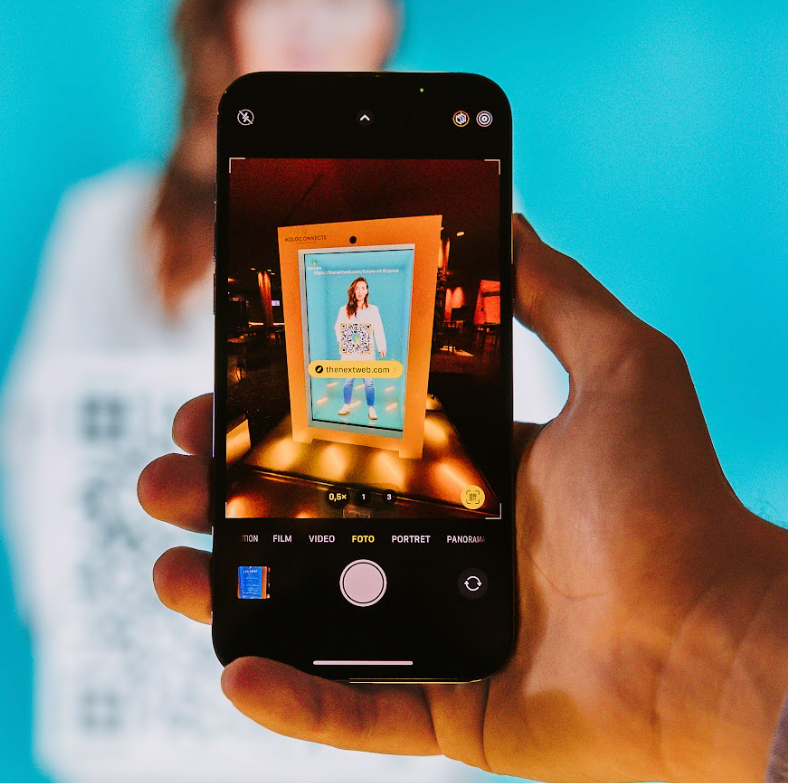Exploring Hologram Technology: Understanding How it Works
Take a tour of the fascinating world of holograms and explore how this technology has progressed from its humble roots in science fiction, famously seen in Star Wars. From fantasy to reality, it is now being used for practical purposes across various industries, so strap yourself in as we look at what holographic technology can do today and consider exciting possibilities that lie ahead!
Short summary
- Holograms are 3D images created with the science of holography, offering realistic visuals.
- Hologram technology is revolutionizing healthcare, education and entertainment by providing vivid 3D views and immersive experiences.
- Cost-effective alternatives to holograms exist now, but more advanced tech like light field displays may be on the horizon.
Defining Holograms: A Closer Look

Holograms provide a realistic visual experience that captures three-dimensional images without the need for special tools, like 3D glasses. This effect is created through holography, an imaging process in which lasers are used to capture and replicate objects into detailed 3D pictures. These entrancing visuals appear to hang suspended midair and can be seen from every angle possible!
Stereoscopic vs. Realistic Holograms
For the production of life-like holographic displays for applications such as mixed reality, there are two types of holograms: stereoscopic and realistic. Stereoscopic images remain static while realistic ones can be altered over time with advanced technology like HoloStudio software that helps designers create engaging experiences through these dynamic visuals. Realistic digital depictions make use of sophisticated technologies to produce meaningful outcomes from generated 3D models or virtual scenes which in turn create an immersive environment.
The Science of Holography
Holography is a process in which light from an object can be reflected and projected into a 3D image. This procedure requires two coherent laser beams – the reference beam and the object beam, which interact on a recording medium to create an interference pattern when exposed to illumination. As a result of this sophisticated technique, there have been numerous uses such as healthcare, military mapping or even space exploration. Its applications extend beyond that – it has also been used for advertising purposes too! Through holography one can capture objects’ reflections made with light before then creating their representation through lasers onto recorded material producing an interference form visible after being illuminated by consistent rays making up what we know today as images produced via Holograpghy itself.
Hologram Technology in Action

Holographic technology is revolutionizing many industries, enabling us to view and learn things with greater depth than ever before. In healthcare, medical experts rely on holograms for three-dimensional visualization as well as preparing operations in advance. Resulting in far more precise outcomes. Education has also been enriched by this tech: digital lessons now incorporate interactive features such as lifelike 3D visuals which enable students to better comprehend challenging concepts. Finally, the entertainment industry utilizes sophisticated holography, bringing deceased artists back onto the stage or using realistic special effects that wow viewers alike!
Healthcare Innovations

Hologram technology has transformed medical imaging, allowing the creation of full-color 3D representations of the human body. This revolutionary technique provides healthcare professionals with an enhanced way to analyze organs such as brains, hearts, livers and nerves in vivid detail when diagnosing or devising treatments.
Digital holographic microscopy is being used for observing subcellular movement deep within living tissue as well as cell counting while providing surgeons with a comprehensive view during operation planning – ultimately improving patient outcomes.
Enhancing Education
Hologram technology can provide learners with an enriched learning experience in three dimensional images, by allowing them to interactively explore and observe complex subjects. This form of education has the potential to revolutionize traditional methods as students are able to manipulate individual atomic particles or inspect ancient ruins digitally via holographic visuals. Such innovative use of this technology encourages curiosity within pupils while enhancing their comprehension skills, setting a new standard for educational advancement through science and creativity.
Entertainment and Performances

Holograms have changed the face of entertainment, constructing vivid and captivating experiences for global audiences. Utilizing holographic technology, events such as Tupac’s Coachella performance in 2012 were made feasible, creating a space between what is real and what is illusory.
As advances are continually developed within this area of research, opportunities to produce breathtaking interactive performances arise. One example is Eric Prydz’s EPIC 5.0 event in London 2017 that culminated with an optical illusion—a projected image resembling his physical presence. Hologram technology opens up many possibilities for immersive enjoyment on massive scales or in intimate settings alike.
Emerging Applications of Holograms

Hologram technology is pushing the boundaries of what was once thought to be impossible and new applications are arising due to its advancement. To demonstrate this, Verizon and Korea Telecom used 5G technology for the inaugural holographic call that showcased potential developments in communication moving forward.
In terms of retail marketing, holograms have become a popular tool amongst companies looking to draw attention from customers, leading them towards purchases, while militaries use it for analyzing surgical points as well as strategizing different visual assets.
Telecommunications Breakthroughs
Verizon and Korea Telecom’s first ever live holographic call back in 2017 proved to be a game-changing moment for the field of telecommunications. This feat showed us how new technology can potentially revolutionize communication by offering an experience that is more immersive and engaging than traditional methods.
To be able to do so. Push boundaries, digital companies like Portl are providing cutting edge solutions with automated booths featuring glass fronts, which allow users to transport their own personal 3D images from one location to another – amplifying opportunities when it comes to global networked conversations through holograms!
Retail and Marketing Strategies
In the highly competitive universe of retail and marketing, holograms are making a huge impact by offering customers an incredibly unique way to interact with products. Utilizing cutting-edge 3D viewing technology, people now have access to 360 degree views of items which give them more options for visual assessment.
Holographic technology has also been adopted into creative promotional campaigns such as Coca Cola’s “#bestcokeever” movement that integrated innovative game elements via this method, resulting in massive participation from consumers all over the world. As hologram technologies continue to advance, both retailers and marketers will need to adapt their strategies accordingly. Thus enabling shoppers even greater immersive experiences when using these futuristic tools.
Military and Defense Applications
The development of holographic technology is quickly finding its place in the military and defense industry, providing invaluable resources for strategizing. Holograms create 3D models that assist with decision-making by showing landforms, assets and personnel. This helps to have a better understanding of the terrain they are engaging in as well as improving coordination among units. By constructing these detailed visualizations it allows for more efficient planning overall – something which looks set to grow even more. When we look towards future advancements in holography.
Hologram Alternatives and Future Developments
Hologram technology continues to be a captivating and realistic option, though the cost of implementation is often high. Alternatives such as video walls, freestanding kiosks and projection mapping have been developed in order to provide an easier way for people wishing to make use of 3D visualizations without breaking the bank.
There are promising possibilities on the horizon with innovations taking place concerning light field displays & data storage/mining that may help unlock potential. Developments when it comes to holograms down the line.
Cost-effective Alternatives

If you’re looking for something more budget-friendly, projection mapping could be the right solution. It requires projecting video content onto irregular shapes in order to make them an interactive and visually appealing display surface. Kino-momo. Holo technology offers a simpler approach to creating holographic visuals at much lower costs than traditional hologram tech — even if they don’t provide as much realism as actual holograms do.
Advancements in Light Field Displays
The future of holographic technology lies in the progress made with light field displays. These enable 3D images without having to use glasses or other specialized tools and consist of transparent LED displays that are increasingly slim-lined, as well as head mounted light-field display systems. With all these advances we can expect ever more creative and absorbing holographic experiences beyond what current 3D visualizations provide us.
Continuous improvements in this area will also open up new boundaries when it comes to exploring possibilities for expressive pictorials using the medium of holography.
Summary
Holographic technology has made great strides since it was once just a figment of our imaginations and is now used in fields such as healthcare, education, entertainment and telecommunications. This type of tech provides an incredibly realistic visual experience with the potential to revolutionise various industries by altering how we communicate, learn or interact with the world around us. As more advances are discovered within this area of holograms each day, the future looks bright for its application across multiple domains!
Frequently Asked Questions
Is a holograph the same as a hologram?
A hologram is a three-dimensional image that has been formed using the process called ‘holography’, whereas a holograph pertains to any handwritten document.
Is a hologram a real image?
A hologram is an authentic image that maintains all the details, such as parallax and depth, of what it originally depicts. It’s basically a more complex version of capturing 3D images. This means that in reality, this picture has just as much truthfulness to it as any other physical item would have.
Who invented the first hologram?
Dennis Gabor, a Hungarian-British physicist, was the pioneer of holographic technology. He won the 1971 Nobel Prize in Physics due to his innovation and development of this cutting edge method. His ground-breaking work enabled the generation of realistic 3 dimensional images with light waves – thus securing him recognition as an inventor for such remarkable advancements within laser physics and optics.